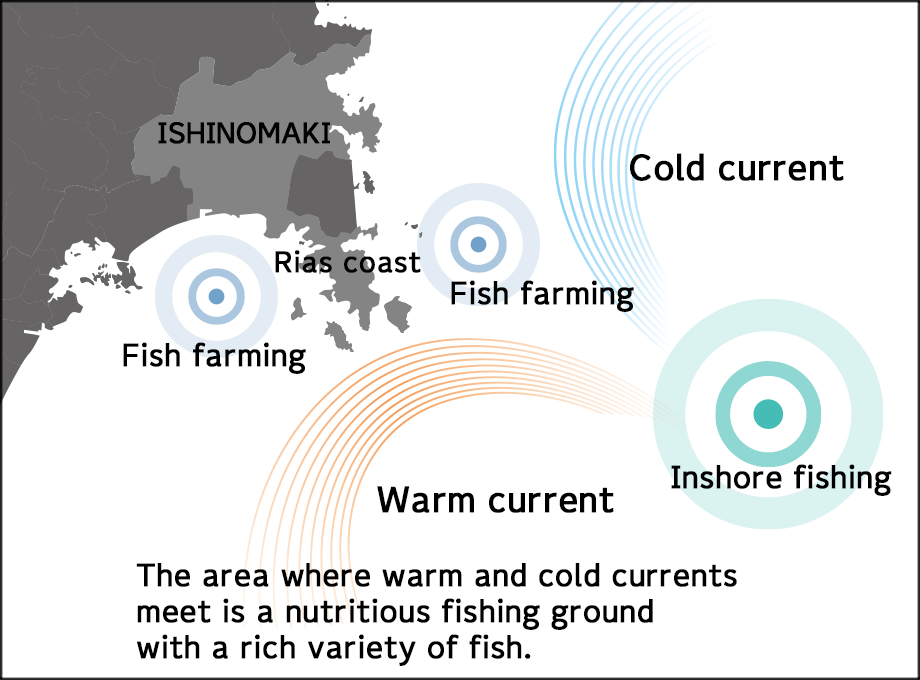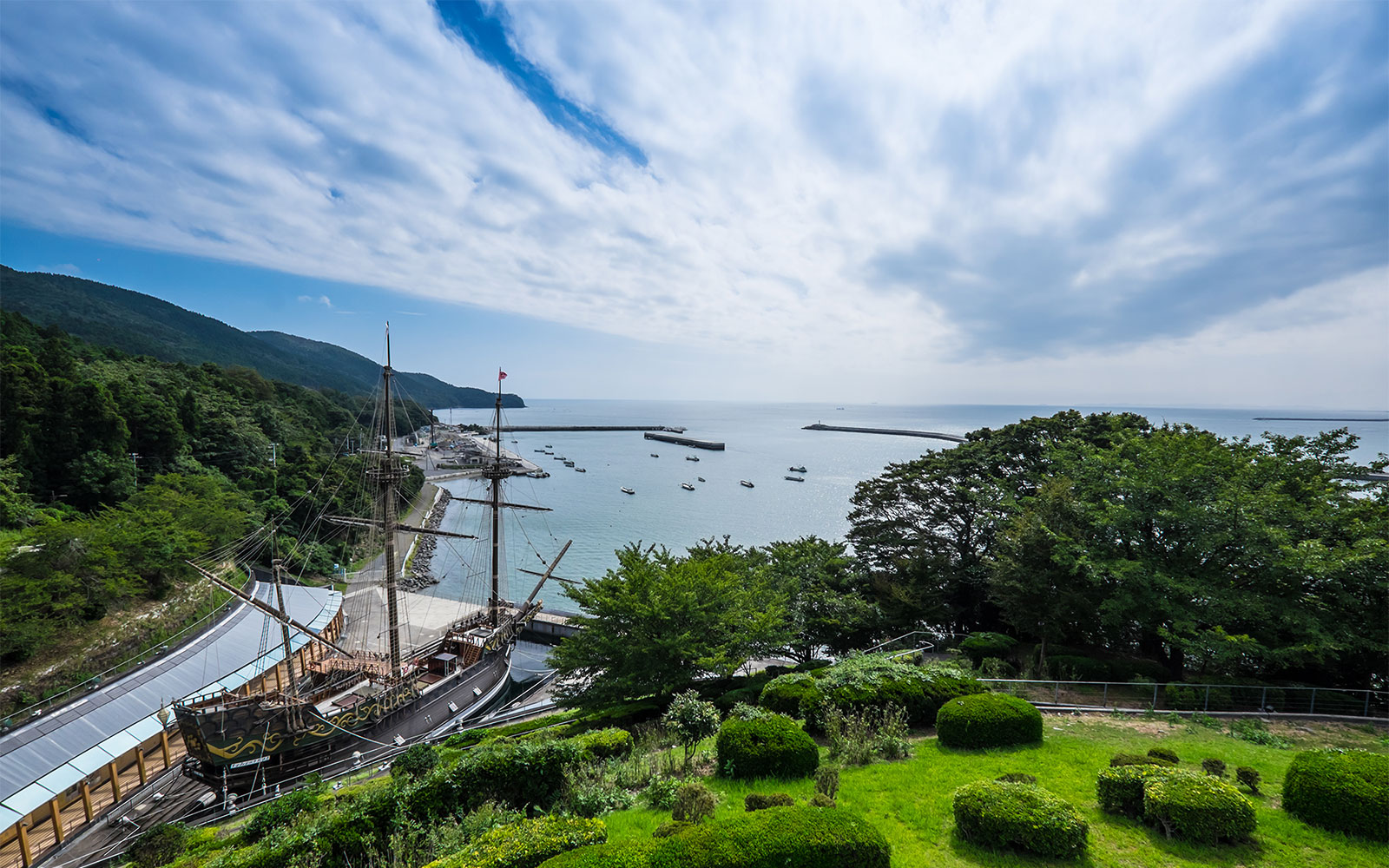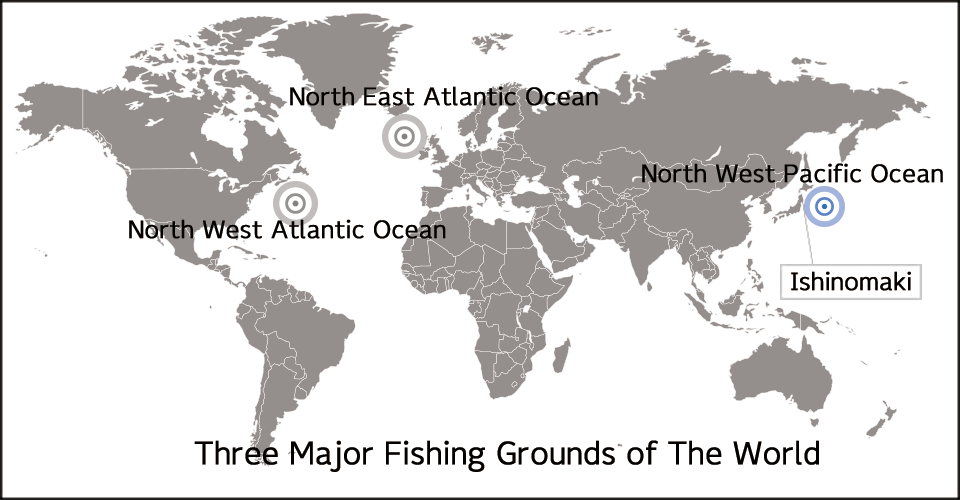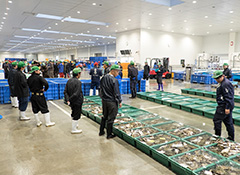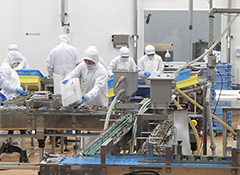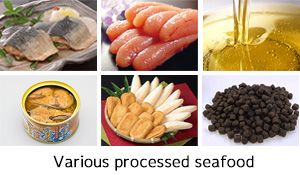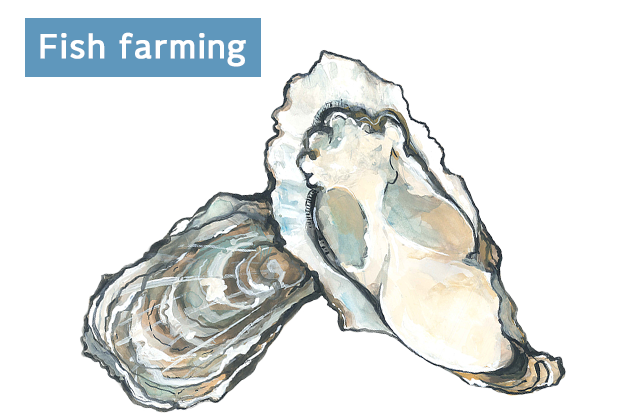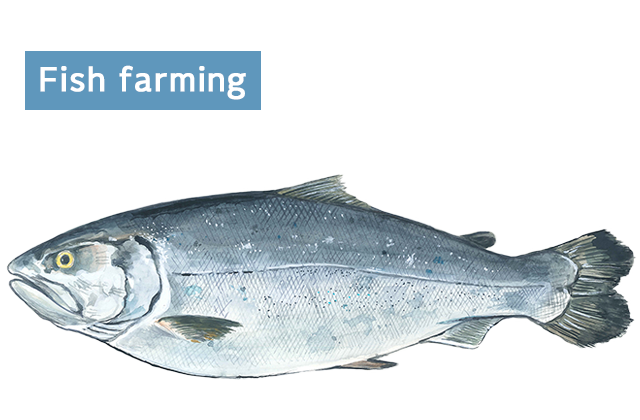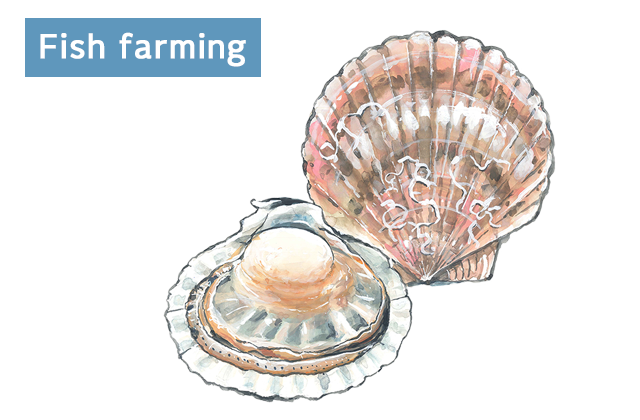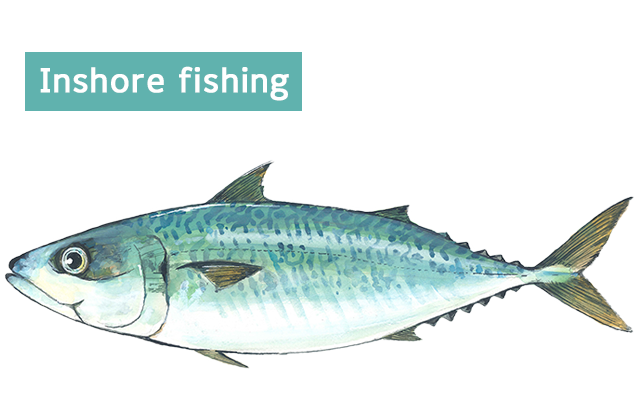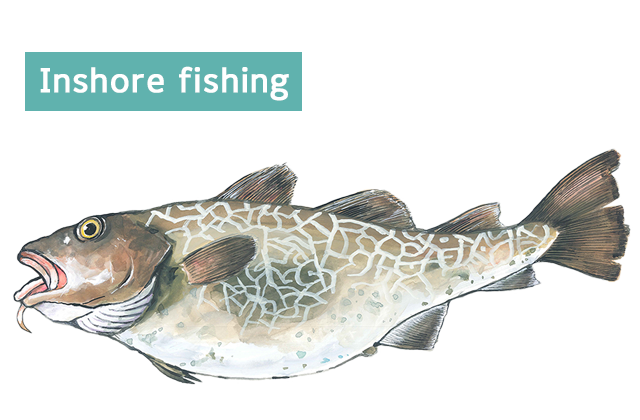The Sanriku–Kinkasan Offshore fishing grounds at the tide where the Oyashio current collides with the Kuroshio current are one of the world’s three biggest fishing grounds. In addition, the rias coast has a gentle cove and it is a garden of the sea creatures. There are also plenty of nourishment from the forest, plankton is also abundant in the sea of Ishinomaki.
In order to send the blessings of the blessed sea of Ishinomaki to the world, fishermen use a variety of fishing methods such as purse seine netting, bottombed netting and set net. In addition, oyster cultivation, whose aquaculture method is supposed to be the basis of the aquaculture way currently performed in the world, produces 70% of Miyagi prefecture. In addition, diverse aquaculture business is carried out utilizing nutrient rich fishing ground such as scallops, hoya, silver salmon and seaweed etc.
And the grace of such seas gathers at
the Ishinomaki Fish Market, the gateway to the sea in Ishinomaki. Furthermore, in the area “”Sakana Machi””(means Fish Town in Japanese) spread behind it, as many as 60 companies that support the fishery industry are gathered as a name.
In Sakana Machi, we deliver delicious fishery processed goods every day, to meet the diverse needs of the modern era by combining sophisticated skill and high technology equipment. A wide range of products such as canned fish, frozen foods, vacuum packs, retort foods, fish meal, etc. are produced from raw materials for processing making full use of the material of the fish itself, such as live fish / fresh fish, fillets and paste.
